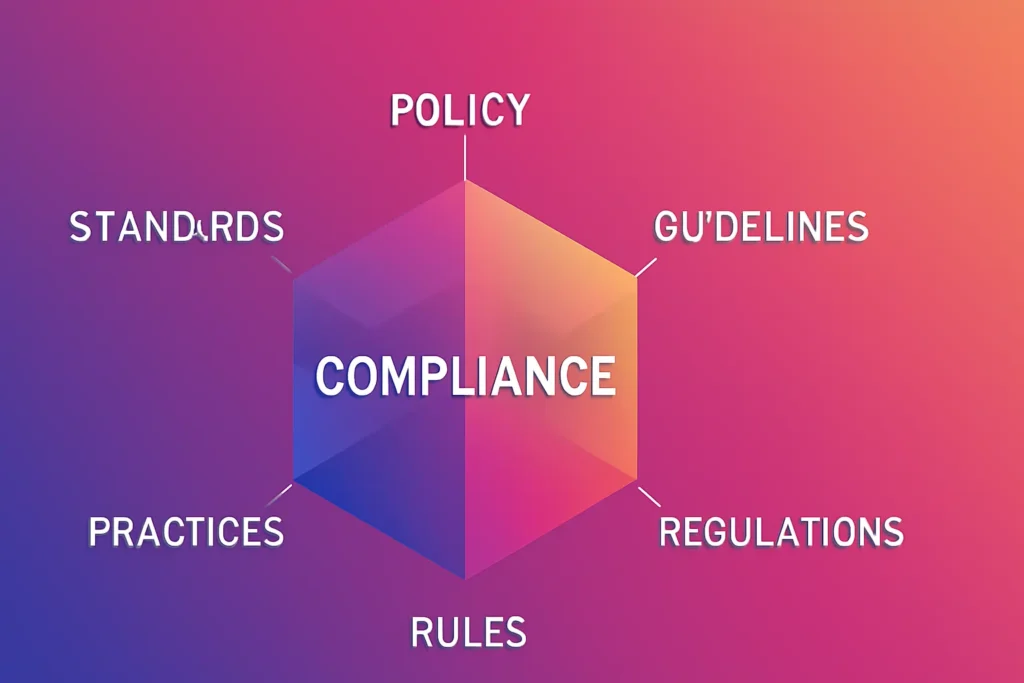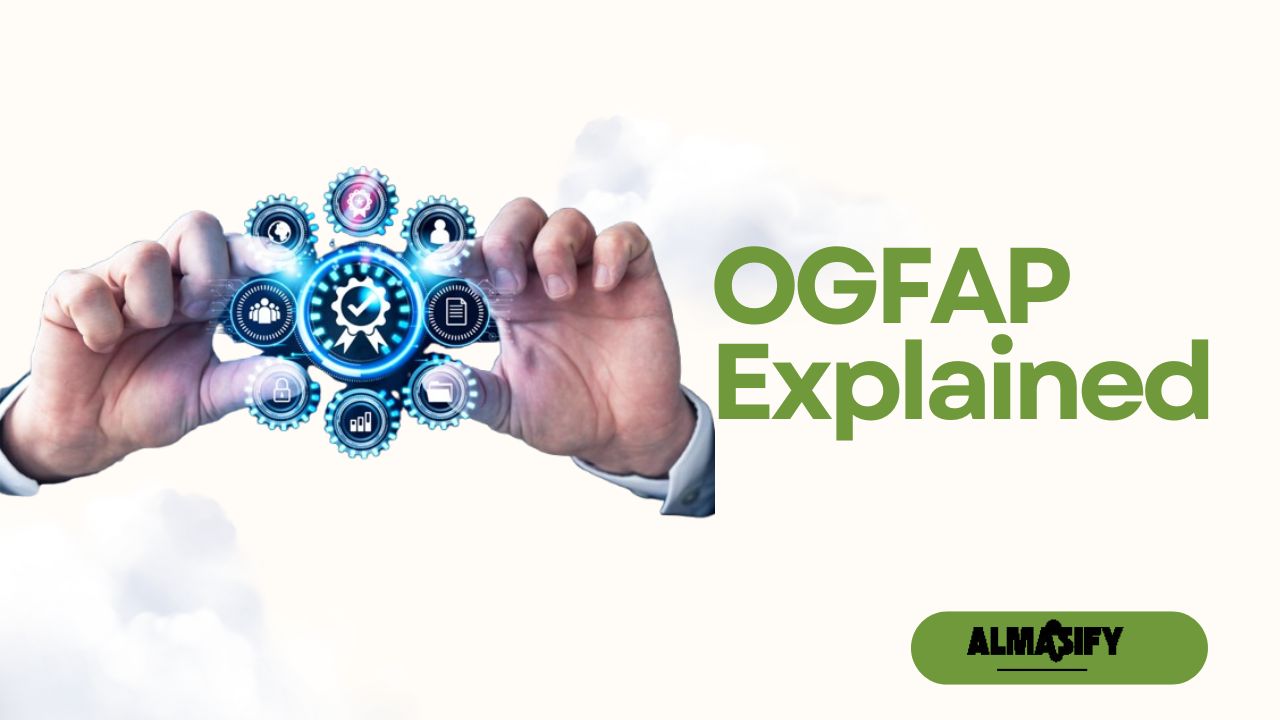In today’s rapidly evolving business environment, achieving operational excellence is more crucial than ever. OGFAP, which stands for Operational Governance, Framework Alignment, and Performance Optimization, is a strategic approach that enables organizations to streamline operations, align business frameworks, and continuously optimize performance.
At its core, OGFAP integrates governance best practices with effective operational frameworks, ensuring that companies are equipped to adapt to dynamic market demands and maintain efficiency. By combining these elements, OGFAP empowers businesses to make data-driven decisions, improve accountability, and unlock their full potential.
What is OGFAP?
OGFAP stands for Operational Governance, Framework Alignment, and Performance Optimization. It is a comprehensive methodology designed to enhance organizational efficiency by integrating governance structures, aligning operational frameworks with strategic objectives, and continuously optimizing performance.

- Operational Governance: Establishes clear decision-making processes, accountability structures, and compliance measures to ensure ethical and effective management.
- Framework Alignment: Ensures that operational activities are in sync with the organization’s strategic goals, fostering coherence and direction.
- Performance Optimization: Focuses on continuous improvement through data-driven insights, process enhancements, and adaptive strategies.
- Read more about Connections Hint Mashable.
Why OGFAP Matters for Modern Organizations
In today’s dynamic business environment, characterized by rapid technological advancements, regulatory complexities, and shifting market demands, traditional management approaches often fall short. OGFAP addresses these challenges by providing a structured approach to:
- Enhance Decision-Making: Clear governance frameworks reduce ambiguity, leading to more informed and timely decisions.
- Improve Efficiency: Streamlined processes and aligned objectives minimize redundancies and optimize resource utilization.
- Ensure Compliance: Robust governance structures help organizations adhere to regulatory requirements, reducing the risk of legal issues.
- Foster Innovation: A well-aligned framework encourages adaptability, allowing organizations to innovate and respond to market changes effectively.
By adopting OGFAP, organizations can navigate complexities with greater agility, ensuring sustained growth and competitive advantage.
Learn about our new blog FSI Blog.
The Evolution of OGFAP
The evolution of OGFAP (Operational Governance, Framework Alignment, and Performance Optimization) reflects the changing landscape of modern business management. Its roots can be traced back to traditional governance frameworks that sought to impose structure and accountability across organizational operations. Over time, as businesses faced increasingly complex challenges—such as digital transformation, global competition, and the need for faster decision-making—these early frameworks had to evolve to remain effective.
The Historical Development of OGFAP
- Early Governance Frameworks:
In the early stages, businesses relied heavily on hierarchical management structures and rigid frameworks to control operations. These models focused primarily on compliance, reporting, and minimizing risk but were often too slow and inflexible to adapt to rapid market changes. Governance was seen as a means of maintaining stability rather than driving performance. - The Rise of Operational Alignment:
As industries grew more competitive and globalized, businesses began to recognize the need for a more cohesive approach to governance—one that aligned operational activities with strategic objectives. Frameworks like Balanced Scorecard and Total Quality Management (TQM) emerged, emphasizing the integration of performance metrics, operational efficiency, and alignment with broader business goals. - The Push for Performance Optimization:
As technology evolved and businesses became more data-driven, there was an increased focus on performance optimization. Organizations began to realize that merely having operational controls and alignment wasn’t enough; they needed tools and strategies to continuously improve and adapt their operations. This led to the development of frameworks that incorporated continuous feedback loops, real-time performance monitoring, and data analytics into decision-making.
How the Business World’s Needs Led to OGFAP’s Emergence
- Digital Transformation:
The rapid advancement of technology over the last two decades revolutionized how businesses operate. With the rise of digital tools and data analytics, organizations could now capture vast amounts of real-time data on operations, performance, and customer behavior. This data-driven revolution pushed businesses to look for more agile governance frameworks that could keep pace with this constant flow of information while optimizing performance. - Globalization and Increased Competition:
As markets became more globalized, businesses were pressured to improve efficiency and innovation. OGFAP emerged as a response to these pressures, offering a holistic approach that not only ensured compliance and governance but also aligned operations with strategic goals and continuously optimized performance for greater competitive advantage. - Regulatory and Compliance Demands:
With increasing regulations across industries, businesses needed a framework that ensured they met legal and ethical standards while still allowing them to remain flexible and innovative. OGFAP was developed to provide a structure that balanced governance, compliance, and performance optimization, making it easier for businesses to meet regulatory demands without sacrificing efficiency. - Shift Toward Agile and Adaptive Organizations:
The need for businesses to be more agile and adaptive in response to rapid changes in technology and consumer behavior led to the adoption of flexible governance models like OGFAP. These models encourage organizations to continuously align their operational activities with their strategic goals while ensuring that performance optimization is embedded in every aspect of the business.
Core Components of OGFAP: A Breakdown
OGFAP (Operational Governance, Framework Alignment, and Performance Optimization) is a strategic framework that helps organizations streamline operations, improve decision-making, and ensure alignment with broader business goals. The three core components of OGFAP—Governance, Framework Alignment, and Performance Optimization—play a crucial role in creating efficient, adaptable, and high-performing business operations.
| Component | Purpose |
|---|---|
| Operational Governance | Ensures compliance, ethical practices, and standardized processes |
| Framework Alignment | Aligns organizational strategy with operations |
| Performance Monitoring | Tracks KPIs and benchmarks |
| Risk Management | Identifies and mitigates potential threats |
| Continuous Improvement | Uses feedback loops to refine processes |
OGFAP Framework Structure
Strategic Level
Strategic alignment sets the foundation for governance and performance optimization by ensuring that every action and decision aligns with the organization’s overarching goals.
Operational Level
At the operational level, day-to-day processes are designed and executed to directly support the strategic goals, ensuring alignment between planning and execution.
Analytical Level
At the analytical level, performance is tracked through key metrics and KPIs, enabling organizations to measure success and identify areas for improvement.
Key Benefits of Implementing OGFAP
Streamlined Processes and Improved Decision-Making
OGFAP integrates operational efficiency with strategic objectives, creating smoother workflows and enabling faster, data-driven decisions.
Increased Efficiency, Accountability, and Overall Performance
Clear governance structures and continuous performance optimization boost productivity, accountability, and overall business outcomes.
Better Risk Management and Business Adaptability
By integrating real-time data and adaptive frameworks, OGFAP enhances risk mitigation and improves the ability to quickly adjust to market or regulatory changes.
OGFAP vs. Traditional Governance Models
| Aspect | OGFAP | Traditional Governance Models |
|---|---|---|
| Focus | Aligns operational activities with strategic objectives for continuous performance optimization. | Primarily focuses on compliance, risk management, and operational control. |
| Flexibility | Highly adaptive, with a focus on real-time data and agile decision-making. | Often rigid, slow to adapt to changes in market or technology. |
| Decision-Making | Data-driven, informed by real-time analytics and performance metrics. | Centralized decision-making with limited real-time insights or data-driven approaches. |
| Efficiency | Optimizes resources by eliminating redundancies and aligning operations with business goals. | Efficiency may be secondary to regulatory compliance and maintaining existing processes. |
| Risk Management | Proactively identifies and mitigates risks using data and continuous monitoring. | Risk is often managed reactively with a focus on avoiding compliance breaches. |
| Performance Monitoring | Continuous performance tracking using KPIs and real-time analytics for ongoing optimization. | Performance is typically measured through periodic reviews and reports, not continuously optimized. |
| Governance Structure | Decentralized, with clearly defined roles but more empowerment at lower levels for faster decisions. | Centralized, with top-down authority and slower decision-making. |
| Innovation & Adaptability | Promotes innovation by encouraging continuous improvement and adaptability to change. | Can be slow to innovate due to adherence to established procedures and controls. |
| Focus on Compliance | Balances governance with flexibility, ensuring compliance while enabling growth and adaptability. | Primarily focused on compliance, often at the expense of flexibility and operational innovation. |
Step-by-Step Guide to Implementing OGFAP
mplementing OGFAP (Operational Governance, Framework Alignment, and Performance Optimization) is a structured process that requires careful planning, clear milestones, and continuous optimization.
1. Assessment Phase
Evaluate current governance and operational frameworks to identify gaps.
2. Framework Design
Develop an OG-FAP model tailored to your organization’s objectives.
3. Technology Integration
Adopt digital tools for performance tracking and analytics.
4. Training and Communication
Educate stakeholders to ensure smooth adoption.
5. Continuous Monitoring
Regularly review KPIs and refine processes for ongoing improvement.
Challenges in Adopting OGFAP
Cultural Resistance: Employees may be reluctant to adopt changes to established workflows.
Cost Factor: The initial investment in training and technology can be substantial.
Data Overload: Handling and analyzing vast amounts of data presents difficulties.
Skill Gap: Teams need expertise in governance and analysis to effectively implement OG-FAP.
Best Practices for OGFAP Success
- Clear Objectives: Define clear goals for what the framework should achieve.
- Stakeholder Involvement: Engage all relevant stakeholders early in the process.
- Comprehensive Training: Provide thorough training to employees and teams.
- Scalable Infrastructure: Ensure infrastructure can handle the growing volume of data.
- Change Management: Use effective change management strategies to overcome resistance.
- Continuous Monitoring: Regularly monitor performance and adjust strategies as needed.
- Collaboration Tools: Implement collaboration tools to foster team communication and problem-solving.
- Data Governance: Establish strong data governance practices to ensure data quality and compliance.
- Pilot Programs: Start with small-scale pilot programs before full-scale implementation.
- Feedback Loops: Create mechanisms for ongoing feedback to improve processes over time.
OGFAP in Different Industries
| Industry | Application of OGFAP |
|---|---|
| Manufacturing | Automating quality control, optimizing production processes. |
| Healthcare | Enhancing diagnostic accuracy, automating medical record analysis. |
| Finance | Automating risk analysis, fraud detection, and compliance checks. |
| Retail | Optimizing inventory management, demand forecasting, and sales predictions. |
| Education | Personalized learning, automating grading, and content creation. |
| Legal | Automating contract analysis, legal research, and case prediction. |
| Transportation | Route optimization, traffic prediction, and fleet management. |
| Energy | Optimizing resource allocation, predictive maintenance, and energy management. |
| Telecommunications | Enhancing network performance analysis and customer service automation. |
| Agriculture | Precision farming, crop yield prediction, and resource management. |
Future of OGFAP
The future of OGFAP (One Generalized Framework for Automatic Proofs) is promising and could evolve in several key directions:
- Wider Adoption: As industries recognize the value of automation in formal proofs, OGFAP could become a standard tool for various sectors like AI, finance, healthcare, and manufacturing.
- Increased Integration: OGFAP may integrate with other advanced technologies such as machine learning, blockchain, and IoT, creating a more comprehensive framework for proof automation.
- Improved Efficiency: With advancements in computing power and optimization algorithms, OGFAP will likely become faster and more efficient in handling complex proofs at scale.
- User-Friendly Interfaces: As the technology matures, we can expect more intuitive and accessible interfaces, making it easier for non-experts to utilize OGFAP for their own applications.
- Collaboration Across Domains: The future of OGFAP will likely see more collaboration between academia, industry, and research organizations to develop best practices, standards, and tools that support the framework’s growth.
- AI-Powered Enhancements: OGFAP might leverage AI and machine learning to enhance proof generation, improving both accuracy and the ability to solve increasingly complex problems autonomously.
- Open-Source and Community Growth: As the framework develops, it could become open-source, with an active community contributing to continuous improvements and new features.
- Ethical and Governance Applications: The future of OGFAP could involve applications in ensuring compliance and ethical decision-making in sectors like finance, law, and healthcare.
Quick Reference Table: OGFAP Essentials
| Essentials | Description |
|---|---|
| Objective | Automating formal proofs and logical reasoning across various domains. |
| Core Components | Logic systems, proof assistants, algorithms for proof generation. |
| Key Benefits | Increased efficiency, accuracy, scalability, and reduced manual effort. |
| Challenges | Cultural resistance, cost of implementation, data overload, and skill gaps. |
| Industry Applications | Healthcare, finance, manufacturing, legal, retail, education, and more. |
| Tools & Technologies | Proof assistants (e.g., Coq, Isabelle), formal verification tools, AI integration. |
| Best Practices | Clear objectives, comprehensive training, continuous monitoring, change management. |
| Future Trends | Integration with AI, wider adoption, improved user interfaces, and scalability. |
Conclusion
OGFAP represents a transformative approach to automating formal proofs and optimizing governance and performance across various industries. By leveraging advanced proof systems and automation tools, OGFAP has the potential to streamline processes, enhance decision-making, and reduce human error. While challenges such as cultural resistance, data overload, and technical skill gaps remain, adopting best practices and focusing on continuous learning can help overcome these barriers. As OGFAP evolves with AI integration, better scalability, and more user-friendly interfaces, its future is poised for wider adoption and deeper integration across industries. Ultimately, OGFAP is a powerful framework for improving efficiency, accuracy, and governance in both technical and business operations.
Frequently Asked Questions
What is OGFAP?
OGFAP (One Generalized Framework for Automatic Proofs) is a system designed to automate formal proofs, helping to improve governance, performance, and decision-making across various industries by leveraging logical reasoning and proof assistants.
How does OGFAP enhance governance?
OGFAP automates the verification of rules, regulations, and compliance protocols, ensuring that governance processes are accurate, efficient, and consistent. It helps organizations streamline decision-making and maintain regulatory compliance.
What industries can benefit from OGFAP?
OGFAP can benefit a wide range of industries, including healthcare, finance, manufacturing, retail, legal, education, and telecommunications, by automating formal proof generation and improving operational efficiency.
What are the main challenges in adopting OGFAP?
Key challenges include cultural resistance to change, high initial costs for training and technology, managing large data volumes, and the need for skilled teams in governance and analytics.
How can organizations overcome these challenges?
Organizations can overcome these challenges by implementing clear objectives, investing in employee training, using scalable infrastructures, and promoting effective change management strategies to ensure smooth adoption.
What are the best practices for OGFAP success?
Best practices include setting clear objectives, involving stakeholders, providing comprehensive training, using scalable infrastructure, continuously monitoring progress, and ensuring strong data governance.
What is the future of OGFAP?
The future of OGFAP includes broader adoption across industries, better integration with AI and other technologies, enhanced scalability, more user-friendly interfaces, and a more active community contributing to continuous improvements.
How does OGFAP improve performance?
OGFAP automates complex logical tasks and proofs, significantly reducing human error and time spent on manual processes, thus improving performance and efficiency in decision-making and operations.
Can OGFAP integrate with existing tools and systems?
Yes, OGFAP can integrate with existing formal verification systems, proof assistants, and business management tools, making it adaptable to a wide range of organizational needs.
Is OGFAP easy to implement?
While OGFAP offers many benefits, its implementation can be complex and may require technical expertise, clear planning, and a phased approach, starting with pilot programs to test its capabilities before full-scale adoption.

